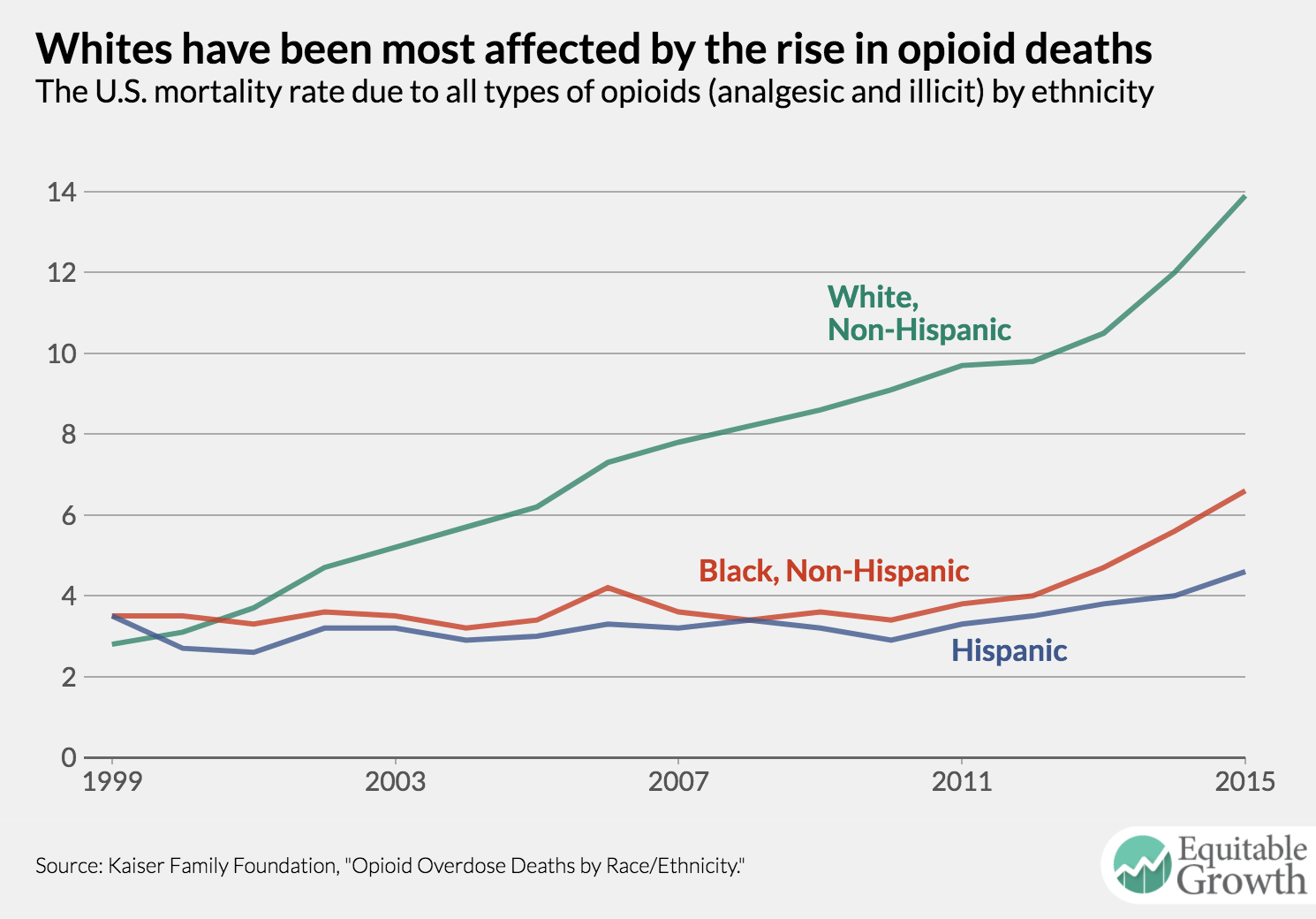The opioid crisis: A consequence of U.S. economic decline?

The opioid epidemic continues to devastate families and communities across the United States, causing serious health and socioeconomic crises. The high prescription rate for opioids and the subsequent misuse of this medication by millions of Americans accelerated addiction and has led to a four-fold increase in the rate of overdoses since 1999. Estimates indicate that more than 90 Americans die every day from opioid overdoses. This drug misuse costs the federal government $78.5 billion per year in health care, addiction treatment, and productivity loss, according to the U.S. Centers for Disease Control and Prevention.
Economists Anne Case and Angus Deaton at Princeton University attribute the sharp increase in drug overdoses between 1999 and 2015 to “deaths of despair” rather than to the increased ease of obtaining opioids: That is, their research suggests that higher drug suicides are attributable to social and economic factors such as a prolonged economic decline in many parts of the United States. They show that white Americans are more affected by the opioid epidemic, yet less affected by economic downturns than other racial and ethnic groups in the country. (See Figure 1)
Figure 1

Why are whites experiencing a more dramatic rise in drug mortality than nonwhites? Other researchers associate this growth with the drug and public health environment rather than economic conditions. Research scientist Kyong Ae Ko and his colleagues at the University of Texas MD Cancer Medical Center find that the availability and the use of risky drugs are of particular importance in rising drug fatalities. Health scholars Ashta Singhal at the Boston University School of Dental Medicine, Yu-Yu Tien at the University of Iowa College of Pharmacy, and Rene Hsia at the Department of Emergency Medicine and Philip R. Lee Institute for Health Policy Studies at the University of California, San Francisco, find similar results. Both studies observe that whites have been prescribed more opioids than nonwhites, and assert that this fact explains the racial-ethnic disparities in drug overdose.
In a recently released paper, public policy professor Christopher Ruhm at the University of Virginia sheds further light on the debate over whether the opioid crisis is health related or economy related. He assesses the relative contribution of the opioid addiction crisis and socioeconomic crisis from 1999 to 2015 in 3,098 counties with consistent boundaries over the time period across the country. As a first step, the author measures the impact of long-run economic changes on drug and alcohol suicide by labor-market outcomes, household wealth, and international trade shocks. Ruhm finds that counties that are more affected by economic decline show higher drug mortality than those with better performance. Yet he also finds that the size of this effect is not large enough to explain the opioid epidemic.
Overall, he estimates that economic conditions explain roughly one-tenth of the drug death increase. Thus, he says the “deaths of despair” theory fails to adequately explain the fatal drug epidemic.
He also finds evidence that the “drug environment hypothesis”—that the availability and the cost of drugs in legal and illicit markets mostly explain the increase in overdose deaths—is valid. Ruhm observes a shift in the nature of the drug involved in fatal overdoses: The beginning of the analysis period was dominated by a rise in opioid analgesic overdoses, while since 2010 overdoses mainly involved illicit opioids such as heroin. If economic conditions were the key driver of the increase in overdose deaths, then there would be no reason for such a shift.
Moreover, he also finds that overdose death rates vary with sex and age, further validating the drug environment hypothesis. Indeed, the groups at higher risk of abusing prescription opioids (females and older adults) have the largest increase in drug death rates early in the analysis period, while males and young adults (a group with higher risk of illicit drug abuse) experience an explosive growth in drug death rates around 2010. Thus, he argues that a change in the drug environment over these years and the people more at risk of specific drug abuse were differently affected.
President Donald Trump in October declared the opioid crisis a national health emergency. Further research into the economic causes of the crisis identified by economists Case and Deaton and the drug environment causes pinpointed by an array of health experts would go a long way toward developing federal, state, and local policies to combat the opioid crisis effectively.
Iris Maréchal is a Fall intern at the Washington Center for Equitable Growth and a French exchange student at the Johns Hopkins University within the Aitchison Fellowship Program.
